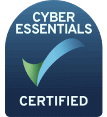What is accessible content marketing?
Accessible content refers to written material, images, and data that can be viewed, understood, and interacted with by a diverse audience of all abilities, including those with disabilities.
When creating content, it is important to put yourself in the users’ shoes and consider the experience they will have when they consume your content.
To help with this, the Web Content Accessibility Guidelines were created for web developers and content creators to check if their content and sites meet these standards.
The guidelines require anyone who is publishing their content on the web to follow the main principles of POUR.
- Perceivable – means the information must be visible to all the user’s senses. They can see, hear, and understand what is being presented to them.
- Operable – users should be able to perform actions and navigate their way through the content or site.
- Understandable – consider if users can easily understand the content and operate the interface, they will be using to read it.
- Robust: think about whether your content can be interpreted and accessed through a wide variety of devices, such as screen readers and other assistive technologies.
If your content or website does not meet even one of these guidelines, it will not be classified as accessible content, as users with disabilities will not be able to interact with it.
Why is it important to make content accessible?
The main reason for making sure your content marketing is accessible is so everyone can be included and have the same experience when engaging with it.
Disability Rights UK states there are approximately 14 million people in the UK living with a disability.
Without inclusive and accessible content, that is a significant number of users who will not be able to engage with or interact with your brand.
By utilising accessible content marketing as part of your digital strategy, you can increase your reach, connect with new audiences, and improve brand awareness and loyalty.
Many brands have broadened their accessibility offerings. Here are some examples:
Lego collaborated with RNIB to create Braille Bricks, catering to those who are visually impaired.
Google Maps introduced the ‘Accessible Places’ feature, where users can easily find places that are wheelchair-friendly, with accessible entrances, restrooms, seating, parking, and lifts.
Just as these brands have taken an existing product or service they offer and made it accessible; you can do the same with your content. Here’s how…
How to make sure your content is accessible and inclusive
If you want to improve the accessibility of your web content, but do not know where to begin, follow our handy checklist below:
Consider your language
When writing accessible content, the first thing you need to consider is the language you are going to use.
You want your content to have a broad and diverse reach. So, it is worth bearing in mind before you begin writing that some of your audience may have low literacy skills, disabilities, or English may not be their first language.
Follow these handy tips to adapt your writing style and create engaging content that everyone can interact with:
- Write in plain English
- Avoid ‘fluffy’ writing and provide information that matters
- Use short sentences, ideally less than 21 words
- Make one point per sentence
- Spell out acronyms
- Define any terms that may be difficult for users to understand
- Use the same terminology throughout your content. For example, if you are writing a piece of content about the police, stay consistent with this wording and avoid using variations such as law enforcement and officers of the law.
- Use the active voice
- Avoid idioms – for example: ’break a leg’ – can be difficult to understand for those whose first language is not English. Bear in mind that the current average reading age for a UK adult is 9 years old.
According to the National Literacy Trust, 1 in 7 adults have literacy levels at or below Entry Level 3. This is the literacy level of children aged nine to 11 years old.
If you are struggling to replace your complex words with simpler terms, GOV UK has a handy list of words to avoid and useful alternatives you could use instead.
Adjust your fonts and text size
You have created your content, but now you need to make sure that users can clearly read it.
Firstly, you need to choose a legible and clear font. Accessibility.com advises using the more widely used fonts, such as Helvetica, Ariel, and Veranda, as users will be able to access this content on a variety of devices and read the text as it was intended.
There is no definitive rule as to what size your text should be, but it is advised by GOV UK that smaller font sizes, 14x and below, have a negative impact on accessibility.
The Web Content Accessibility Guidelines also advise that any text used should still be legible when zoomed in at 200%, without loss of content or functionality.
Structure your content
As with the language used in your content, the structure needs to follow an easy format.
Help the reader understand the flow and topic of the content they are about to read with clear and descriptive headings.
These can be useful, as readers can sometimes skim headings in search of specific content.
You can also ensure your headings are clear to the reader by following the H2, H3, H4 structures, allowing users and crawlers to easily navigate and understand.
Text Help recommends using paragraph tags, which mark the beginning and end of a paragraph. These tags allow screen readers to easily jump between paragraphs and provide a pause between each one if content is being read aloud.
Lists can also be a useful way of presenting content, as they are much easier to read and scan than paragraphs of text. These can be presented in bullet points or numerical format, depending on whether the list is ordered or not.
Be smart with hyperlinks
Another key factor to consider when making your content marketing more accessible is hyperlinks.
When including external or internal links in your content, make sure the text accurately describes where the link will take the user. Avoid using naked links or ‘click here,’ as this is vague and provides no context to the reader.
A good example of clear and accurate hyperlink text is: ‘For further information on how you can tell if content has been written by AI, check out our blog on How to Spot AI Content.’
It is transparent and provides the reader with enough information to make an informed decision as to whether they want to click on the link.
To help readers identify the links within your content even more easily, you can emphasise them by adding them in a different colour to the surrounding text or underlining them.
Finally, when it comes to making your hyperlinks accessible, it important that any links which direct users to different web pages contain their own unique text.
For example, if a user accessing your content via a screen reader wants to skim or listen to a list of links to identify which one they need, they will find it extremely difficult if all your hyperlinks contain the text ‘click here,’ or ‘read more.’
Add meaningful alt text
Alt text is often left out, or thought of as ‘an SEO trick’ in that keywords are just shoved in.
However, the point of meaningful alt text for both SEO and accessibility is actually describing the image so – instead of ‘white cat on mat’ you put ‘a white cat lies on a fluffy mat in front of a fire.’
If you need further help or inspiration, GOV UK has a list of useful tips for writing good alt text.
Include multimedia
Adding multimedia to your content can be a great way of enhancing the user experience and increasing engagement.
However, as with all other aspects of your content marketing, you need to make sure it can be utilised by all users.
The Web Content Accessibility Guidelines state that for your multimedia content to be accessible, you need to:
- Provide a text alternative for all video and audio content – this is because screen readers are not able to read video captions, but they can read transcripts.
- Provide audio descriptions of videos – beneficial for those who have visual impairments or low vision.
- Include captions on videos – ideal for those who are deaf or hard of hearing.
- Offer a sign language video alongside any media with audio – beneficial for those who are deaf and use sign language as their primary form of communication.
Test your content
If you would like to see how making your content marketing more accessible will affect your users, the best approach is to test it on representative members of your audience.
You will be able to see firsthand how simple changes and additions to your content can make a huge difference in terms of inclusion and user engagement, as well as gain invaluable feedback to inform your content going forward.
Tools to help with content accessibility
There are many tools available to help you make sure your content is accessible and inclusive.
Some of our favourites include:
- WAVE – assesses a URL and feeds back any accessibility issues
- WebAIM – checks text and background colours to see if text can easily be read
- Flesch Reading Ease – measures the readability of your content
- Unsplash, Pexels, IStock – stock imagery sites providing a range of inclusive images
- ACTR aDesigner – free disability simulator that assesses content and applications to see if they are accessible via voice browsers and screen readers
Need help with making your content marketing accessible?
There are plenty of ways you can improve your content marketing accessibility, but it all starts with considering your audience’s perspective and giving any decisions that extra bit of thought and consideration.
If you would like help with making your current content marketing strategy more inclusive and accessible, get in touch to see how we can help.
Alternatively, book a Free Acquisitions Workshop, where you can gain invaluable insights from our expert marketers, an action plan tailored to your concerns, and free resources to continue improving your digital strategy.
Slots are filling up fast; book today to avoid disappointment!












